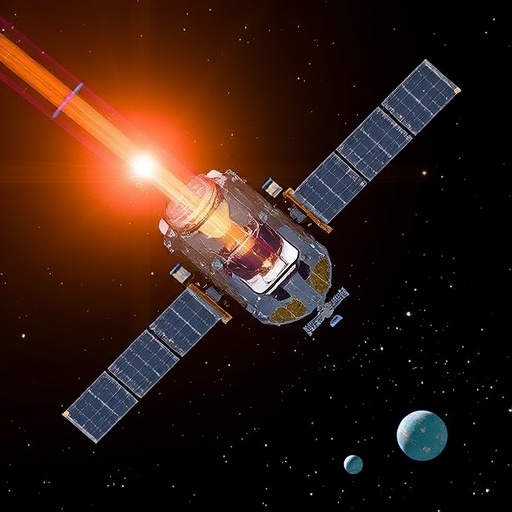Southwest Research Institute (SwRI) has achieved a significant milestone in aerospace safety with its development and testing of a Micrometeoroid and Orbital Debris (MMOD) detection and characterization system. This innovative technology is specifically designed to monitor and analyze impacts on satellites and spacecraft, a critical advancement in an era when space debris has become increasingly problematic. The need for effective monitoring systems is underscored by the prevalence of space debris, which can pose serious threats to operational spacecraft and satellites, jeopardizing missions and risking substantial financial investment and human safety.
The MMOD detection and characterization system represents a pioneering approach to understanding and mitigating the risks associated with space debris. Unlike conventional sensors that primarily react to impacts only post-event, SwRI’s solution provides comprehensive post-impact data that can be critical for assessing damage that may not be immediately visible. This capability allows for an enhanced understanding of the nature of the threats posed by micrometeoroids and debris, contributing valuable information to the ongoing challenge of orbital safety.
In essence, the system operates through a specially engineered structural element that is embedded with advanced sensors. During the testing phase, these sensors collected extensive data that were later analyzed to glean insights into impact events. This allows for the identification of impact details including the speed, composition, and trajectory of the debris involved. Such information is vital for future spacecraft design, as it informs engineers about how spacecraft might better withstand future impacts from debris that can often be undetectable by conventional means.
SwRI’s team, led by Institute Scientist Dr. Sidney Chocron, highlighted that many spacecraft endure minor impacts without any observable damage. This can lead to a false sense of security among operators, as they may be unaware that their spacecraft has been struck by debris. The goal of the MMOD system is to bridge this information gap by sending data back to Earth in real-time before any damage becomes evident. Such advanced warning systems could not only enhance the safety of individual missions but could also inform broader strategies for future spacecraft developments with the aim of resilience and durability.
Utilizing SwRI’s advanced light gas gun, experiments were conducted to simulate impact conditions that mimic those experienced in outer space. The gun’s capability to replicate the vacuum of space allowed researchers to fire small projectiles at the panels equipped with the MMOD detection system, thereby creating realistic impact scenarios for testing. The results gleaned from these experimental setups provide invaluable data that can inform both the resilience of spacecraft structures and the operational efficacy of the detection system itself.
The realism of the particle impacts tested helped scientists evaluate whether current structures could endure such collisions, ensuring that future designs incorporate insights from these experiments. These experimental tests are critical as they pave the way for a deeper understanding of how orbital debris interacts with spacecraft materials and designs.
In the context of increasing satellite launches and the growing popularity of space exploration, the need for practical solutions to reduce the risks associated with space debris has never been more significant. SwRI’s MMOD system not only addresses current challenges but also sets the stage for future advancements in understanding the high-velocity impacts that could become more common as humanity ventures further into space.
As the research continues and gains traction, SwRI is actively seeking funding for the development of a flight-ready version of the MMOD detection system. This is a strategic move aimed at transitioning from the experimental stage to real-world application. The implementation of such systems on operational spacecraft could ultimately contribute to better debris management strategies, establishing a safer environment for both current and future missions.
In the short to medium term, the insights provided by this MMOD detection system could enable NASA and other space agencies to develop early warning systems that alert satellites when they detect an incoming debris strike. This would facilitate timely maneuvers to avoid potential collisions, thus safeguarding valuable assets in space.
In addition to immediate applications, the long-term objective is to create a comprehensive map of micrometeoroid and debris fields surrounding Earth. This pivotal knowledge will empower engineers and scientists alike to develop more resilient spacecraft for future missions. By characterizing the debris population in orbit, mission planners can make informed decisions that could mitigate risks, ultimately paving the way for safer and more sustainable exploration of outer space.
The research findings, published in the Hypervelocity Impact Symposium paper titled “Tests and Simulations for an On-Orbit Micrometeoroid Detector,” detail the tests and methodologies utilized in developing this detection system. This body of work is poised to significantly impact how future missions are designed and executed in an increasingly crowded low-Earth orbit environment.
In summary, Southwest Research Institute’s innovative approach to micrometeoroid and orbital debris detection is not just a technical achievement; it’s a pathway to ensuring that our aspirations for space exploration can be realized safely. As the quest to provide effective surveillance and protection of our satellite infrastructure progresses, the contributions of SwRI place them at the forefront of this critical research effort, bringing us one step closer to a clearer understanding of the orbital environment in which we operate.
In closing, the evolving threat of space debris necessitates a proactive approach, and initiatives like those at SwRI exemplify the commitment required to safeguard our ventures into the cosmos. With continued technological advancements and innovative research efforts, we can hope to mitigate the risks of space debris while furthering our exploration of the universe.
Subject of Research: Not applicable
Article Title: Tests and Simulations for an On-Orbit Micrometeoroid Detector
News Publication Date: August 18, 2025
Web References: https://doi.org/10.1115/HVIS2024-011
References: Not applicable
Image Credits: Credit: Southwest Research Institute




